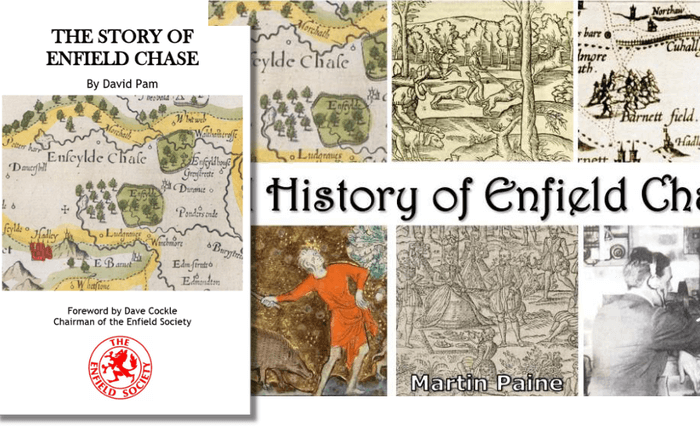 David Pam's 1986 Story of Enfield Chase has been supplemented by a new book by Martin Paine. Both can be downloaded free of charge courtesy of the Enfield Society
David Pam's 1986 Story of Enfield Chase has been supplemented by a new book by Martin Paine. Both can be downloaded free of charge courtesy of the Enfield Society
If you've ever wondered what exactly Chase Side in Southgate was the side of, or indeed what Southgate was the South Gate of, then you only have to travel a couple of miles north from the tube station to come across some clues in the shape of Enfield Chase station, Chase Green, Chase Farm Hospital, the Royal Chace Hotel and another Chase Side.
The answer is the former royal hunting forest known as Enfield Chase (or Chace), which at one time stretched from Potters Bar in the north west over to Whitewebbs in the north east. The southernmost entrance to the Chase was (you guessed it) at Southgate. Chase Side runs from Southgate to Cockfosters along what was part of the western boundary of the Chase, while Chase Side in Enfield runs along part of the former eastern boundary.
While the coming of railways led to much of the former chase being turned into housing estates (hence the title of a 2011 history symposium, Enfield Chase: From Hunters to Commuters) there remains a significant amount of land that has not been built on and is open to the public, including Oakwood Park, Town Park, Whitewebbs, Chase Green and Hadley Common, but most of all Trent Park. There's also a fair bit of agricultural (or until recently agricultural) land stretching from Enfield Road in the south up to the Ridgeway and M25.
It's only to be expected that a royal chase so close to London has a fascinating history that involved some tremendous characters and a fair number of tussles between local inhabitants and authorities. And those tussles continue today, between the leadership of Enfield Council, who wish to build new houses on large expanses of the former farmland, and local civic groups, including the Enfield Society, the modernday successor to the Enfield Preservation Society, founded in 1936.
The threat to large expanses of the historic Chase is one of the factors that has prompted the Enfield Society to reissue a classic history of Enfield Chase by David Pam, first published in 1986, alongside a more recent study that brings the story up to the present day. The Society's website has downloadable versions of both books, which it is making available free of charge. Download links are below.